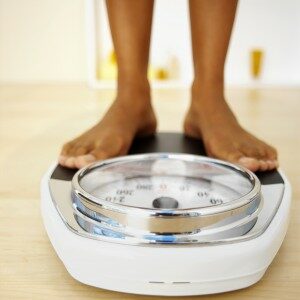 If you care about getting faster, chances are you also care about how much you weigh. And, that’s with good reason.
If you care about getting faster, chances are you also care about how much you weigh. And, that’s with good reason.
Weight plays a key role in our performance as runners and cyclists. Some studies have shown that each additional pound has the potential to slow runners down by as much as 3 seconds per mile.
In cycling, we know that you are only as strong and fast as your power-to-weight ratio (typically expressed as watts per kilo). Said differently: if you have two riders pushing the same amount of watts, with aerodynamic drag being equal, the lighter one will go faster.
So, for those of us concerned about our speed (who isn’t?), finding our optimal race weight is a key part of training.
Notice I didn’t say our lightest weight possible.
There is a big difference between finding the optimal weight for race performance and getting as light as we can. The former can lead us to PRs, the latter will lead us to disappointment.
We do not want to sacrifice too much lean muscle mass simply to be lighter. So, instead of thinking narrowly in terms of pounds, we need to think in terms of body composition, or the ratio between lean muscle and fat mass.
Not all weight is created equal. Researchers have found that a lower body fat percentage, not necessarily a lower weight, has been correlated with better performance, in terms of both speed and strength.
Increased body fat and weight pose several problems for an endurance athlete.
First, fat, unlike muscle, doesn’t contribute to movement, and in fact, it requires that the muscles work harder to get the body to move. Said differently, higher levels of body fat increase the energy cost of movement, without contributing any support for movement. Some researchers have theorized that as much as 50-74% of our energy may be used for supporting our body weight. The more mass we have that is not contributing to that support, the slower we go.
Second, higher levels of body fat and weight can affect cardiovascular functioning. One study found that a 10% increase in weight (not just body fat) increases heart rate by as much as 12%. It also makes it more difficult to efficiently deliver oxygen to working muscles.
Third, increased body fat and weight can lead to increases heat production and storage, which can lead to cardiac drift and higher core temps, when compared with lighter runners working at similar intensities. In the dog days of summer, this trend may be especially concerning.
Taken as a whole the research literature is consistent in finding that our weight, particularly our body fat, plays a significant role in our performance. While simply losing weight will not lead immediately to faster times, it seems clear that a healthy, gradual reduction in body fat, along with a well-thought out training plan, can produce improvements in our performance.
Keep a log of your weight and hydration levels (easily taken with a scale that measures hydration levels). If you lose weight, keep track of how you are feeling: Is your power staying consistent or improving? Do you feel strong? Do you have energy? Are you hitting your benchmarks?
It’s important to note that there is a limit to how much body fat you want to lose. Male athletes average body fat percentages between 6-13%, while females average 14-20%. (Note: these are medical averages, individual differences will apply in some cases.) Maintaining a body fat percentage under these ranges is dangerous for our health, with the medical literature suggesting men should have at least 5% body fat, and women at least 13%.
So, this season, if you are thinking of losing weight, think beyond the scale – consider your overall body composition as a mix of water, muscle and fat. Find the ideal balance that allows you to perform at your best.
*~*~*~*~*~*~*~*~*~*~
Recommended References
Buresh, R., Berg, K., and Noble, J. (2005). Heat production and storage are positively correlated with measures of body size/composition and heart rate drift during vigorous running. Research Quarterly for Exercise and Sport, 76(3), 267-274.
Crecelius, A.R., Vanderburgh, P.M., Laubach, L.L. (2008). Contributions of body fat and effort in the 5k Run: Age and Body Weight Handicap. Journal of Strength Conditioning Research, 22(5), 1475-1480.
Knechtle, B., Wirth, A., Rust, C.A., & Rosemann, T. (2011). The relationship between anthropometry and split performance in recreational male ironman triathletes. Asian Journal of Sports Medicine, 2(1), 23-30.
Lunn, W.R., Finn, J.A., Axtell, R.S. (2009). Effects of sprint interval training and body weight reduction on power to weight ratio in experienced cyclists. Journal of Strength Conditioning Research, 23(4), 1217-1224.
Teunissen, L.P.J., Grabowski, A., & Kram, R. (2007). Effects of independently altering body weight and body mass on the metabolic cost of running. The Journal of Experimental Biology, 210, 4418-4427.
